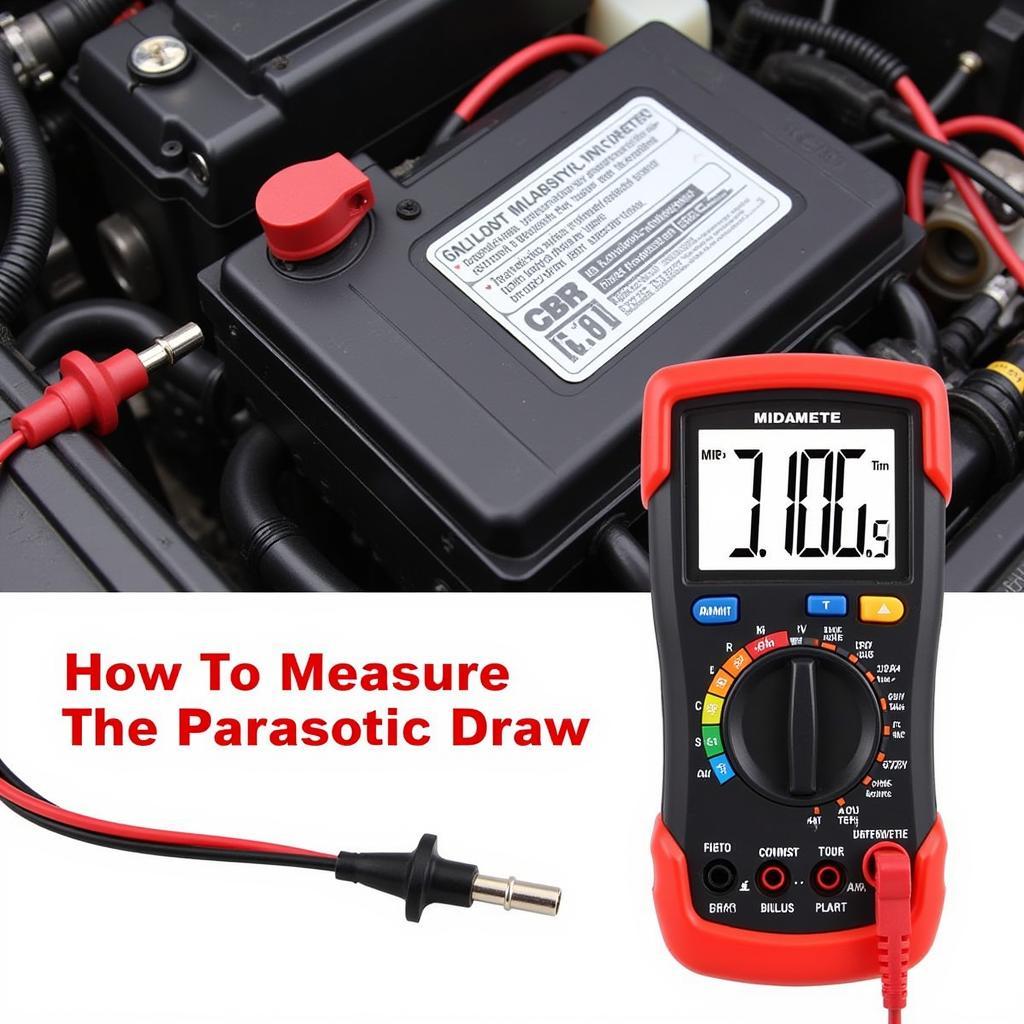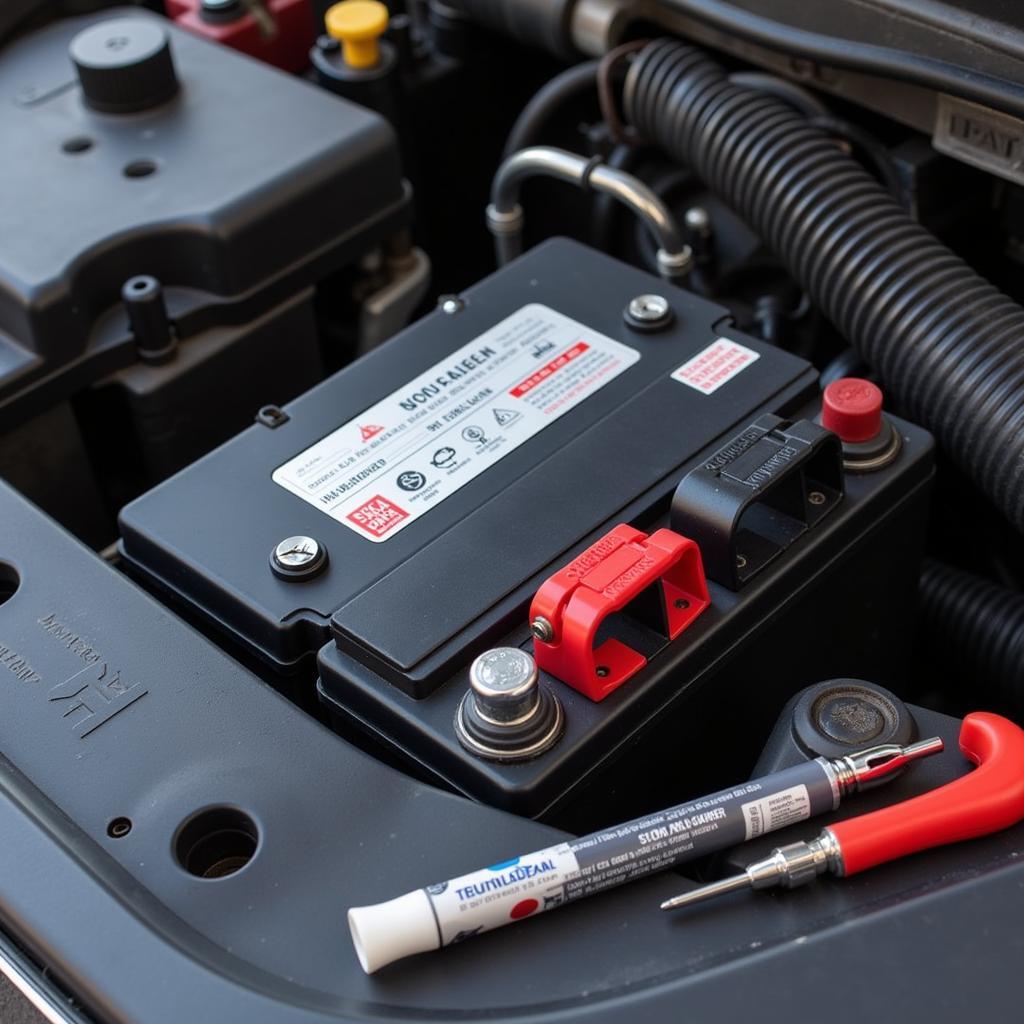Understanding the acceptable draw on a car battery is crucial for maintaining its health and preventing unexpected starting issues. A healthy battery ensures reliable vehicle operation, while excessive current draw can lead to premature battery failure. Let’s explore the intricacies of parasitic draw, how to diagnose it, and ultimately, how to fix it. acceptable current draw on car battery
What is an Acceptable Car Battery Draw?
A car battery, even when the engine is off, powers various systems like the clock, radio memory, alarm system, and some control modules. This constant power consumption is referred to as parasitic draw or dark current. An acceptable draw on a car battery is typically between 25 and 50 milliamps (mA). However, this can vary depending on the vehicle’s make, model, and the number of electronic accessories installed. A draw exceeding this range could indicate a problem and should be investigated.
Identifying a High Battery Drain
Several signs point towards a high battery drain, with the most obvious being a dead battery. Other indicators include slow engine cranking, dimming headlights, and malfunctioning electrical accessories. If you suspect a problem, a simple multimeter test can confirm if the draw is within acceptable amp draw car battery limits.
 Testing Car Battery with Multimeter
Testing Car Battery with Multimeter
How to Check for a Parasitic Draw
checking for a draw on a car battery is relatively straightforward. Begin by ensuring all accessories are off and the car is locked. Disconnect the negative battery terminal and connect your multimeter in series between the disconnected cable and the battery terminal. The multimeter should be set to measure DC current. The reading displayed will indicate the parasitic draw.
Understanding the Multimeter Readings
A reading above 50mA usually suggests an excessive draw. Higher readings, like 100mA or more, indicate a significant problem requiring immediate attention. Even a seemingly small draw can drain your battery over time, especially in colder climates.
Pinpointing the Culprit
If the draw is high, start isolating the circuits by pulling fuses one at a time while monitoring the multimeter. A significant drop in the current reading after removing a specific fuse indicates the problematic circuit. Consult your vehicle’s wiring diagram to identify the components connected to that fuse. Common culprits include faulty interior lights, glove box lights, trunk lights, door switches, and aftermarket accessories.
Preventing Excessive Battery Drain
Regularly checking your battery’s health is crucial. This includes inspecting the terminals for corrosion and ensuring the battery is securely fastened. Limit the use of accessories while the engine is off. If you plan on storing your vehicle for an extended period, consider using a battery maintainer.
Expert Insights
“A common mistake is leaving accessories plugged into the cigarette lighter or USB ports. These can draw power even when the ignition is off,” says John Miller, Senior Automotive Technician at Miller Automotive Solutions.
“Faulty relays can also be a significant source of parasitic draw. They can stick in the ‘on’ position, continuously drawing power,” adds Sarah Johnson, Electrical Systems Engineer at Johnson Automotive Innovations.
Conclusion
Understanding the acceptable amp draw on car battery is vital for maintaining a healthy and reliable vehicle. By being proactive and performing regular checks, you can prevent unexpected breakdowns and extend the life of your car battery. Don’t let a dead battery ruin your day – take control and ensure your vehicle is always ready to go.
 Maintaining a Healthy Car Battery
Maintaining a Healthy Car Battery
FAQ
- What is a typical parasitic draw on a car battery? A typical draw is between 25 and 50mA.
- How do I check for a parasitic draw? Use a multimeter to measure the current draw with the engine off and all accessories turned off.
- What can cause a high parasitic draw? Faulty electrical components, aftermarket accessories, and stuck relays are common culprits.
- How can I prevent excessive battery drain? Regularly check your battery health, limit accessory use while the engine is off, and consider a battery maintainer for long-term storage.
- What should I do if my battery keeps dying? Have a professional diagnose the issue to identify the source of the drain.
- Can a bad alternator cause a parasitic draw? While a bad alternator can’t directly cause a parasitic draw, it can prevent the battery from being properly charged, leading to similar symptoms.
- How often should I check my car battery? It’s a good idea to check your battery at least every few months, and more frequently in extreme temperatures.

